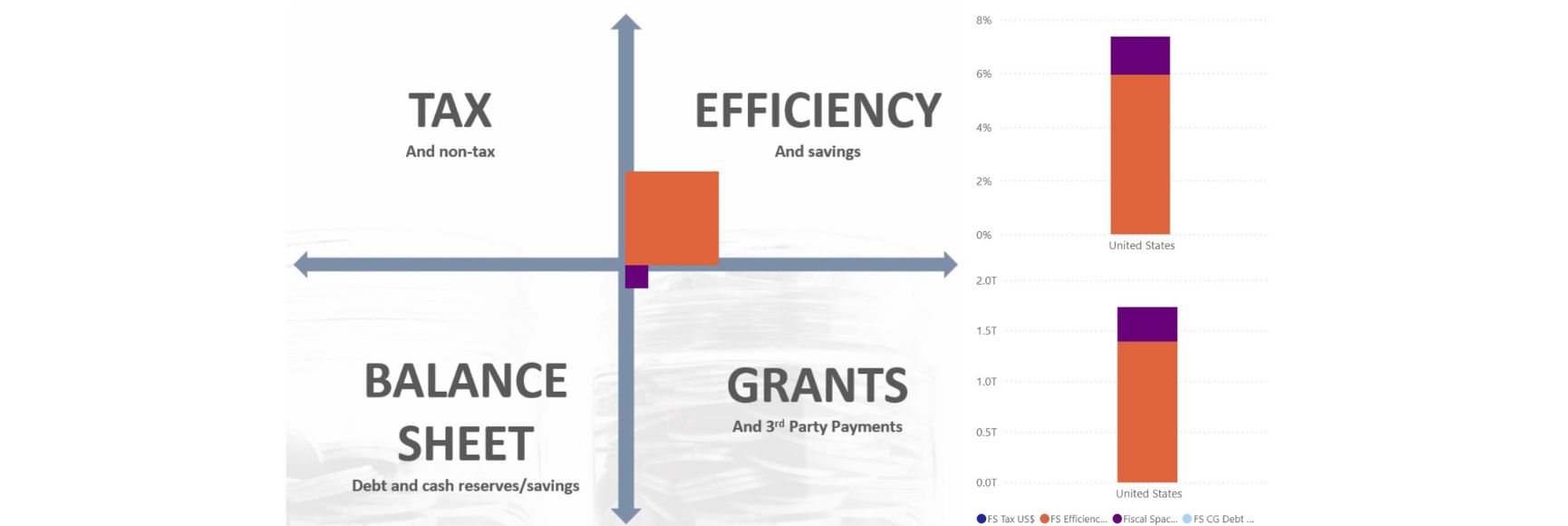Posted by Teresa Dabán
In an effort to break from a long history of fiscal profligacy, during the last decade, Latin American countries have strengthened remarkably their fiscal policy frameworks, including by adopting fiscal rules. The “first generation” of fiscal rules has helped to anchor fiscal policy and strengthen fiscal sustainability in the region. However, because of certain design shortcomings the “first generation” of Latin American fiscal rules was not fully equipped to respond to the challenges posed by the global financial crisis nor to manage the current recovery phase. Against this background, this post argues that Latin American countries could benefit from adopting a “second-generation” of fiscal rules, which aside from addressing sustainability and credibility issues, could help enhance the fiscal policy’s role as a key tool for macroeconomic stabilization over the medium term.[1]
The “first-generation” of fiscal rules in Latin America countries
Reflecting an increased awareness of the detriments of fiscal profligacy and the risks of commodity booms, most of the current Latin American fiscal rules (i.e., those adopted during the last decade) focus on addressing issues related to debt sustainability and commodity price volatility. Accordingly, most of this “first-generation” set of rules targets a balanced budget or a deficit ceiling. They also often include specific provisions to curtail sub-national borrowing and current expenditure growth. In the case of resource-rich countries, most of the rules include provisions for the establishment of resource funds, specifically designed to address resource revenues’ volatility. As a result, the current “first-generation” of Latin American fiscal rules pay little attention either to the business cycle or to the role that fiscal policy could play as a tool for macroeconomic management over the medium-term. Only one country, Chile, has implemented so far a structural balance rule which, aside from addressing copper price volatility and debt sustainability issues, includes an adjustment according to the business cycle, although the adjustment is still conducted on an annual basis and therefore lacks a medium-term perspective (see attached table).
Have the “first-generation” of fiscal rules been successful?
Overall, we could conclude that the “first generation” of Latin American fiscal rules has been broadly successful in strengthening fiscal sustainability. Aided by buoyant revenues, fiscal rules have helped Latin American countries to strengthen their fiscal balances and the net financial positions of their public sectors. Reflecting these improvements, the fiscal policy formulation in Latin American has become more credible and sovereign risks have strengthened. However, improvements in the Latin American countries’ public finances during the past decade hid the fact that fiscal policy was broadly pro-cyclical as real expenditures expanded well above the rate of potential economic growth. The pro-cyclicality derived from some of the rules’ design shortcomings, including a focus on achieving balanced budgets or deficit ceilings, the extensive use of revenue earmarking provisions as well as frequent revisions to the numerical targets and operational procedures. Even in Chile, which is the only country with a structural balance rule to date, fiscal policy has been somewhat pro-cyclical in recent years, mainly as a result of frequent revisions to both the long-term copper price and the numerical targets.
How did Latin America’s fiscal rules perform during the recent global crisis?
The performance of fiscal policy in Latin America in recent years has made more evident than ever the design shortcomings of the first generation of fiscal rules. The implemented fiscal rules were generally ill equipped to respond to the challenges posed either by the global crisis or by the current recovery phase. In particular, the fiscal rules did not provide any guidance on:
• How to accommodate a discretionary response to a major shock within the rules’ frameworks. As commodity prices fell precipitously and recession set in the region, most Latin American countries implemented sizeable countercyclical fiscal responses to the global crisis. Countries’ responses ranged from accommodating the decline in revenues induced by the global financial crisis while keeping expenditures constant to adopting fiscal packages that included discretionary tax and expenditure measures and targeted quasi-fiscal operations. However, in the absence of escape clauses, most of the Latin American fiscal rules were modified or suspended, on some occasions following ad hoc and improvised procedures.
• How to facilitate a medium-term exit strategy to unwind fiscal stimuli implemented to counter a major shock. In particular, the absence of well-designed medium-term fiscal plans, together with the lack of specific mechanisms to set aside current cyclical and commodity-related revenues gains, are making fiscal consolidation very difficult to implement in the present context of closing output gaps.
Do Latin American countries need a “second generation” of fiscal rules? How should this “second-generation” set of fiscal rules look like?
Fiscal policy performance in recent years indicates that Latin American countries could benefit from the adoption of a “second generation” of fiscal rules. Colombia has already taken some steps forward and Chile and other Latin American countries are also considering strengthening their fiscal rules. The new rules would need to strike the right balance between fiscal sustainability, which was the main element of the “first-generation” of rules, and cyclical management, which has become a key issue after the global crisis. In my view, the “second-generation” of rules should include the following features:
- To ensure sustainability, the rules should be embedded into a medium-term fiscal framework, which, depending on countries’ data availability, could include (1) expenditure and revenue envelopes (e.g., floors on social spending and targets for tax collections), (2) long-term projections for commodity revenues and the government’s net financial assets, and (3) routine stress tests, sensitivity analysis, and assessments of debt sustainability and contingent liabilities.
- To reduce procyclicality, the rules should target the structural primary balance, adjusted for the business cycle and commodity prices. Given the difficulties in obtaining robust estimates of the output gap and long-term commodity prices, the rules could be complemented with ceilings on the non-commodity primary balance and the rate of growth of real expenditure.
- To discourage circumventions, the rules should envisage an institutional coverage as comprehensive as possible and include stringent transparency and accountability mechanisms. A nonpartisan fiscal watchdog could be established in charge of providing key parameters and assessing compliance with the rules.
- To provide flexibility, the rules should include transparent escape clauses and a mandate for the government to design a strategy for returning to the medium-term objective.
- To ensure a successful implementation, the rule should be supported by solid institutional arrangements. The institutional arrangements should seek to (1) foster a strong consensus and political commitment over the rule’s objectives, (2) maximize the reputational costs of breaching commitments without over restricting discretion, and (3) guide the public debate on fiscal policy, rather than put fiscal policy on automatic pilot.
[1] This post draws on chapter 2 of the October 2011, Regional Economic Outlook: Western Hemisphere.
Note: The posts on the IMF PFM Blog should not be reported as representing the views of the IMF. The views expressed are those of the authors and do not necessarily represent those of the IMF or IMF policy.





